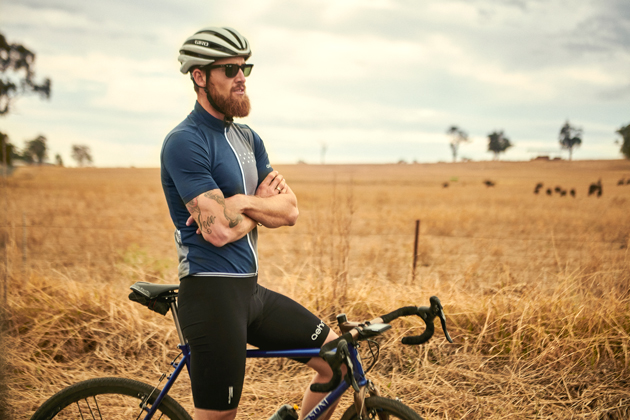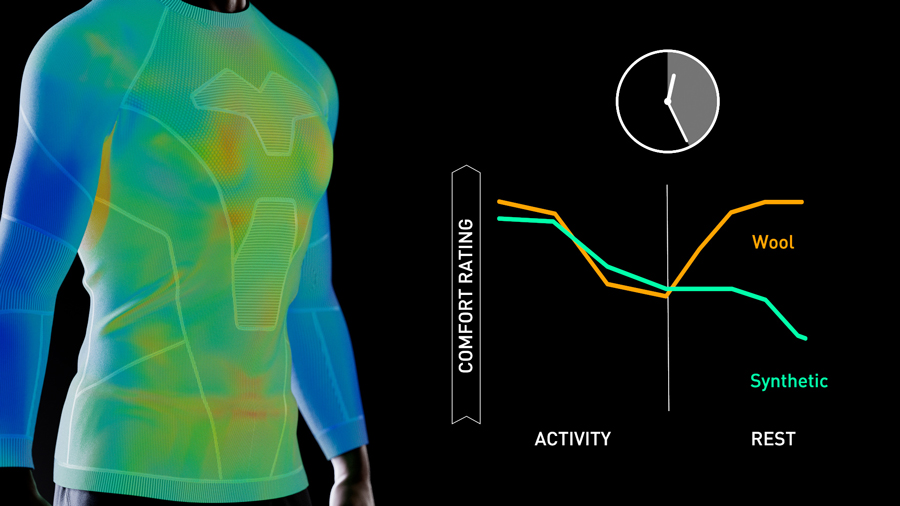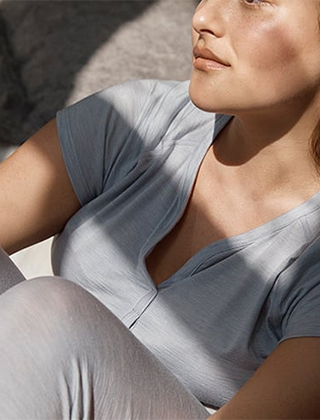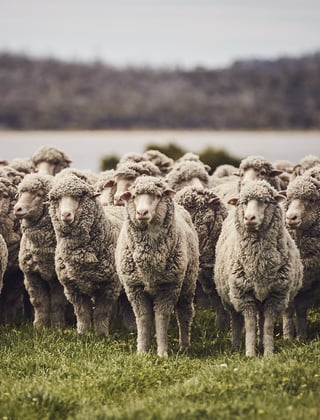Study backs wool for ‘stop-go’ sports

Woolmark is promoting the results of an AWI-funded study that proves 100% Merino wool base-layer fabrics provide excellent thermal comfort during outdoor ‘stop-go’ sporting activities, especially during resting phases when the potential for chilling is greatest.
Fast facts
- An AWI-funded study demonstrates that 100% Merino wool base-layer garments provide greater thermal comfort than other natural and synthetic garments during dynamic ‘stop-go’ sports – such as hiking, cycling and rock climbing. This is most noticeable during the resting phases of these sports when the potential for experiencing ‘after-chill’ is greatest.
- The study’s four peer-reviewed papers have culminated in the submission of a new test method to the American Society for Testing and Materials (ASTM). Enabling clothing designers and brands to objectively measure and validate wool’s thermoregulatory advantage over other fibre types was a key project goal – an outcome that Woolmark’s global marketing staff are now emphasising when engaging with sportswear brands.
- The study also indicates that sportspeople wearing wool use less energy to maintain their thermal equilibrium, than if they wear other natural and synthetic fabrics, leaving the athletes with more energy to use during their sport and competition.
Active outdoor sports such as hiking, cycling and rock climbing are also known as ‘stop-go’ sports because they encompass multiple activity and resting phases. Stop-go athletes sweat during the active phase, which is absorbed by their clothing, and this sweat then evaporates from the clothing during resting periods.
This evaporation has a cooling effect and can be uncomfortable. For example, a cyclist builds up a sweat during a hill climb, but is susceptible to chilling when resting at the top and/or cruising back downhill.
Anecdotal evidence from outdoor sportspeople has often indicated that only Merino wool base-layers are comfortable at all stages of their sport, including before, during and after exercise, compared to base-layers made from other fibres. This concept, known as dynamic breathability, reflects how well a Merino wool garment adapts to changing conditions: managing heat and moisture when the body is working hard, and preserving warmth when activity slows or stops.
Anecdotal evidence, however, often isn’t convincing enough for many sports and outdoor brands. In the absence of objective, scientific research to validate this benefit, they have been reluctant to preference wool over other fibre types – hindering potential future demand for wool.
To address this knowledge gap and provide proof about the superiority of wool fabrics in next-to-skin activewear, AWI funded a major PhD study at North Carolina State University, a research leader in the textile space.
The results of the study provide the scientific evidence of wool’s superior thermal comfort and suitability throughout all the phases of stop-go sports. AWI subsidiary Woolmark is now widely promoting these positive results for wool to sports and outdoor brands, and consumers.
“These research results are truly game changing and provide extra reasons for outdoor sports athletes to wear Merino wool especially as a base-layer,” said AWI Program Manager, Fibre Advocacy & Eco Credentials, Angus Ireland.
“The results will be important in helping drive more sales of Australian wool. The research has already sparked interest from leading sportswear brands, seeking apparel designs that enhance wearer performance.”
See this article for an example of a brand, Sierra Designs, using the dynamic breathability research in its marketing to consumers.
Study proves wool’s superiority
The garments tested at North Carolina State University were made from 100% wool, cotton, viscose, and polyester – all of similar fabric weight and thickness. The fabrics were each tested using ‘sweating manikins’ and then humans.
The sweating manikin studies demonstrated wool to be the fibre with the highest capacity to buffer a transition from an environment of 45% relative humidity to 80% relative humidity, with an impressive temperature buffering efficiency that is:
- 96% superior to polyester
- 45% superior to cotton
- 26% superior to viscose
In the human testing, 12 students wore the garments during activity in a controlled climate chamber on an exercise cycle followed by resting in a simulated breeze to reflect outdoor circumstances. The subjects were asked to rate their comfort, thermal sensation, and wetness throughout each stage of exercise.
During the activity phases, no significant differences between the fibre types were detected by the subjects. However, during the resting phases, the wearers’ perceptions associated with fibre type became significant: The wool garment maintained significantly better thermal sensation and perceived comfort during the resting phases compared to all the other garments – see Figure 1.
Although the polyester fabric dried out more quickly, that did not translate into enhanced comfort. In fact, the reverse was observed, which can be attributed to a significant decrease in skin temperature. The wool fabric had stabilised thermal sensation after the first 10 minutes of resting but the polyester fabric was still trending cooler and less comfortable after 25 minutes and more.
The garments made from cellulosic based fibres, cotton or viscose, tended to perform midway between the extremes shown by the wool and polyester garments.

Figure 1: Comfort rating during activity and 25 minutes of rest
“The combination of wool’s ability to absorb moisture vapour, generate heat and then only gradually release that moisture, together with its hydrophobic outer layer deferring rapid evaporation and cooling, were concluded to be responsible for wool’s dominance,” said AWI’s Angus Ireland.
“While quick-drying fabrics like polyester do lower humidity levels next to the skin, they do not lead to better outcomes for the athlete. The athlete perceives rapid drying during the resting phase as uncomfortable because the rapid evaporation of sweat leads to chilling.
“Ultimately this study proves and reflects what outdoor sportspeople have said anecdotally for years: that wool maximises comfort during during all stages of their sport.”
“Brands need to re-evaluate their focus on quick-drying sportwear and instead preference garments made from fibres, such as wool, that have been specifically designed by nature for dynamic activities.”
Angus Ireland, AWI Program Manager,
Fibre Advocacy & Eco Credentials
The study also indicates that athletes wearing wool expend less energy to maintain their thermal comfort.
“By using less energy to maintain their thermal comfort, the athlete that wears wool is left with more energy to use during their sport and competition,” Angus said.
New fabric test to measure dynamic breathability
The research also demonstrated a way for fabric and apparel manufacturers and brands to objectively measure the dynamic breathability of fabrics. It uses a modified version of the apparatus already used in the textile industry.
Most existing standard test methods that use the apparatus are ‘steady-state’ test methods and don’t reflect the changing environmental conditions of real-world stop-go outdoor sports. But the AWI-funded researchers have modified the apparatus to emulate the environment of stop-go sports: a higher sweating rate, a higher wind speed, and three cycles of sweating/no sweating.
The proposed ASTM test method has received significant support from sportwear brands, with many co-signing a letter of support encouraging the standards organisation to promptly adopt the changes.
More information: www.woolmark.com/dynamic-breathability
Merino sleepwear eases effect of menopause
Merino sleepshirt from Sleepy Merino, a sleepwear and loungewear brand set up five years ago by woolgrower Julie Bird of Inverell in northern NSW.
Women going through menopause can experience hot flashes, which during the night can lead to sweaty nightwear and uncomfortable chills when the moisture in the clothing cools.
This is a similar effect experienced by athletes during stop-go sporting activities. A solution is to wear the Merino wool clothing. The natural moisture management and thermoregulating properties of wool nightwear enable the wearer’s body to maintain a more stable thermal comfort.
Merino wool nightwear can therefore help provide a more comfortable and uninterrupted sleep for women during perimenopause and menopause.
This article appeared in the Spring 2025 edition of AWI’s Beyond the Bale magazine that was published in September 2025. Reproduction of the article is encouraged.














